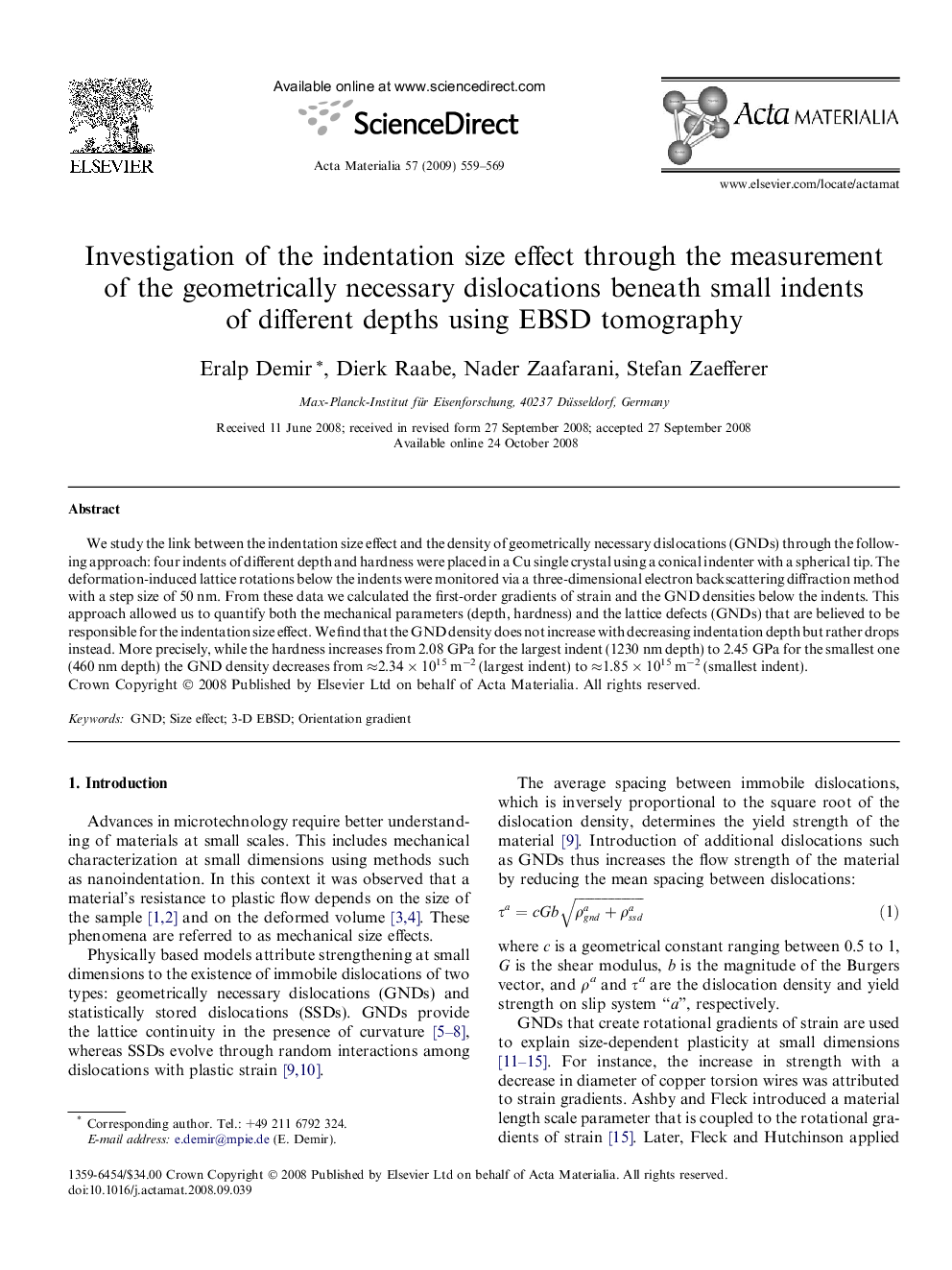| Article ID | Journal | Published Year | Pages | File Type |
|---|---|---|---|---|
| 1448825 | Acta Materialia | 2009 | 11 Pages |
We study the link between the indentation size effect and the density of geometrically necessary dislocations (GNDs) through the following approach: four indents of different depth and hardness were placed in a Cu single crystal using a conical indenter with a spherical tip. The deformation-induced lattice rotations below the indents were monitored via a three-dimensional electron backscattering diffraction method with a step size of 50 nm. From these data we calculated the first-order gradients of strain and the GND densities below the indents. This approach allowed us to quantify both the mechanical parameters (depth, hardness) and the lattice defects (GNDs) that are believed to be responsible for the indentation size effect. We find that the GND density does not increase with decreasing indentation depth but rather drops instead. More precisely, while the hardness increases from 2.08 GPa for the largest indent (1230 nm depth) to 2.45 GPa for the smallest one (460 nm depth) the GND density decreases from ≈2.34 × 1015 m−2 (largest indent) to ≈1.85 × 1015 m−2 (smallest indent).
